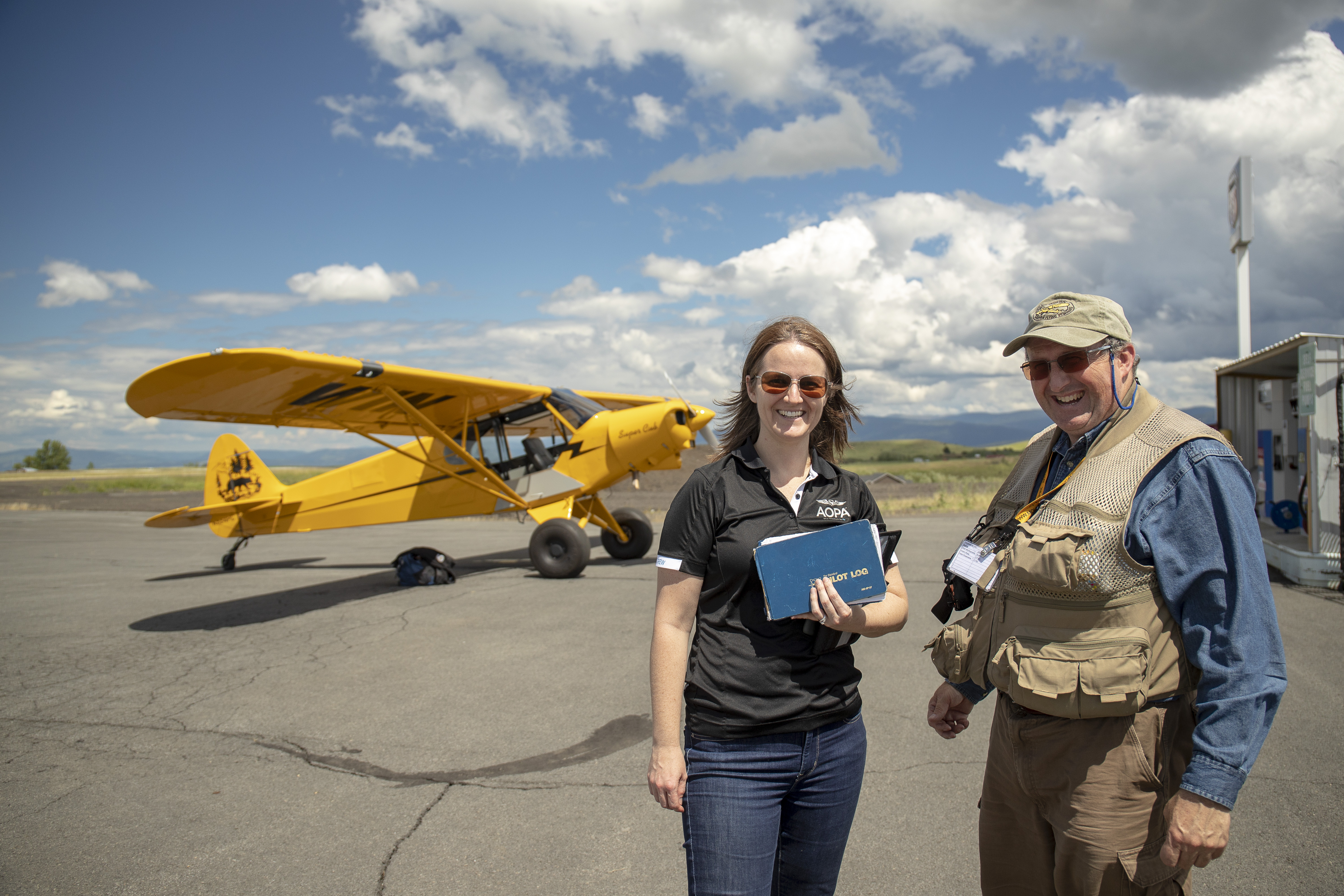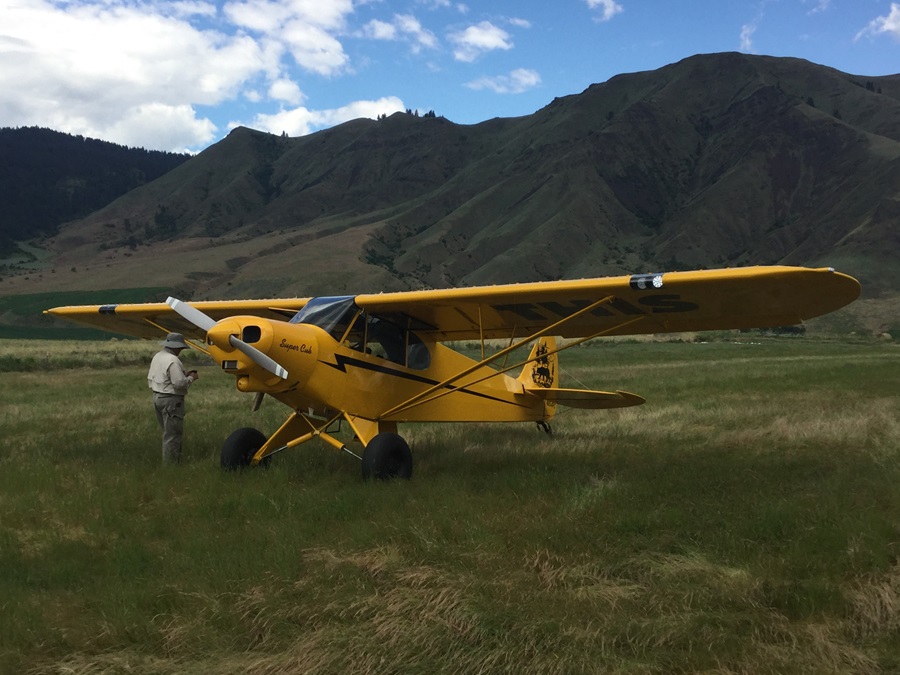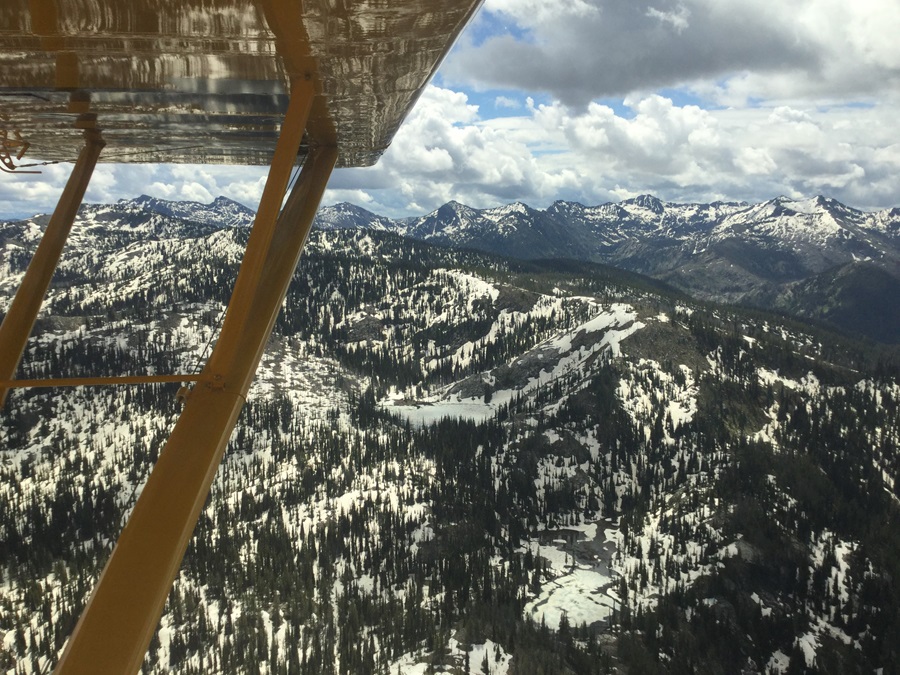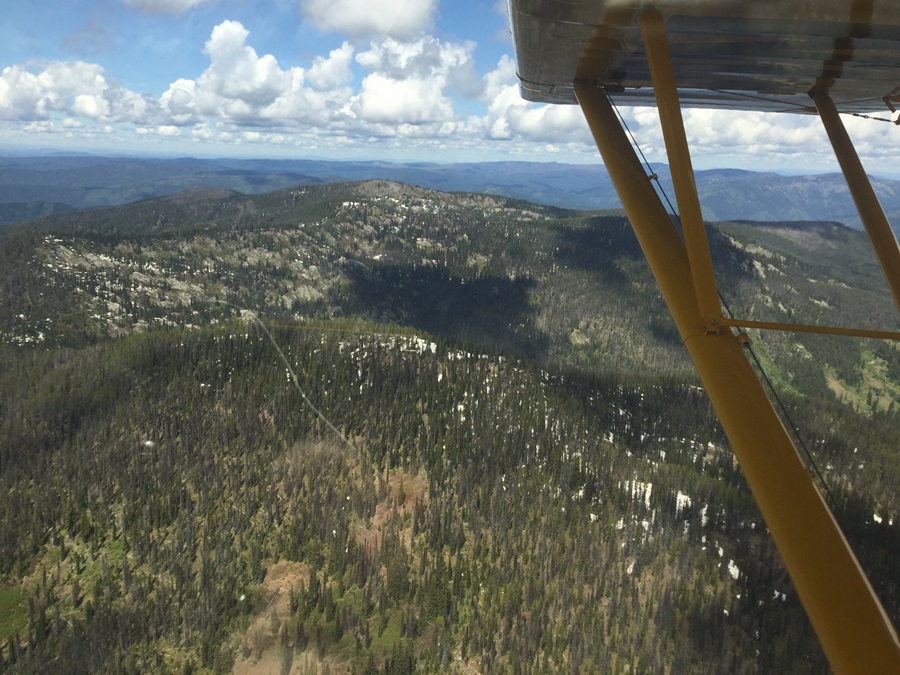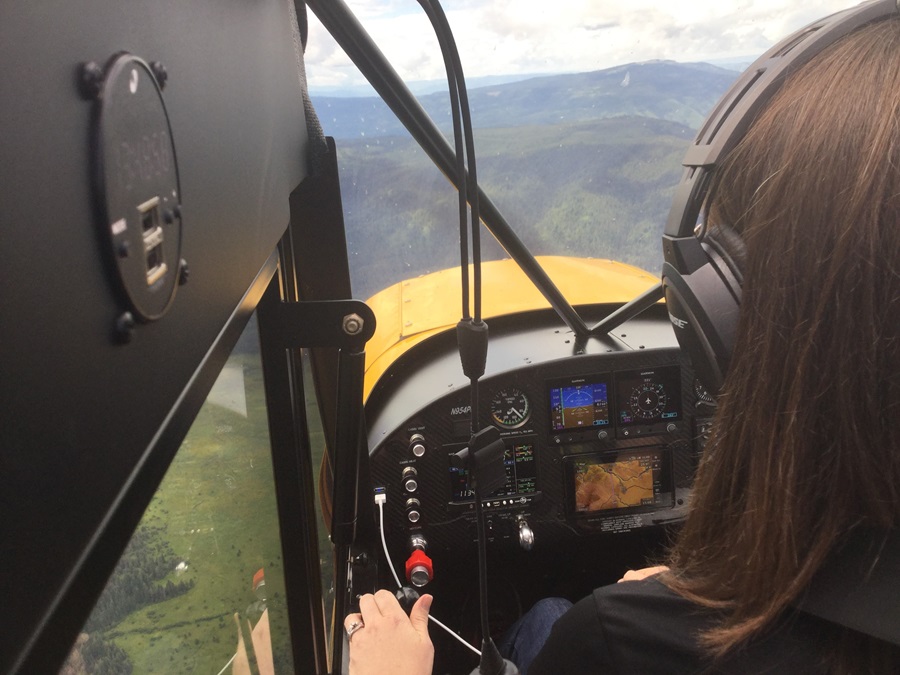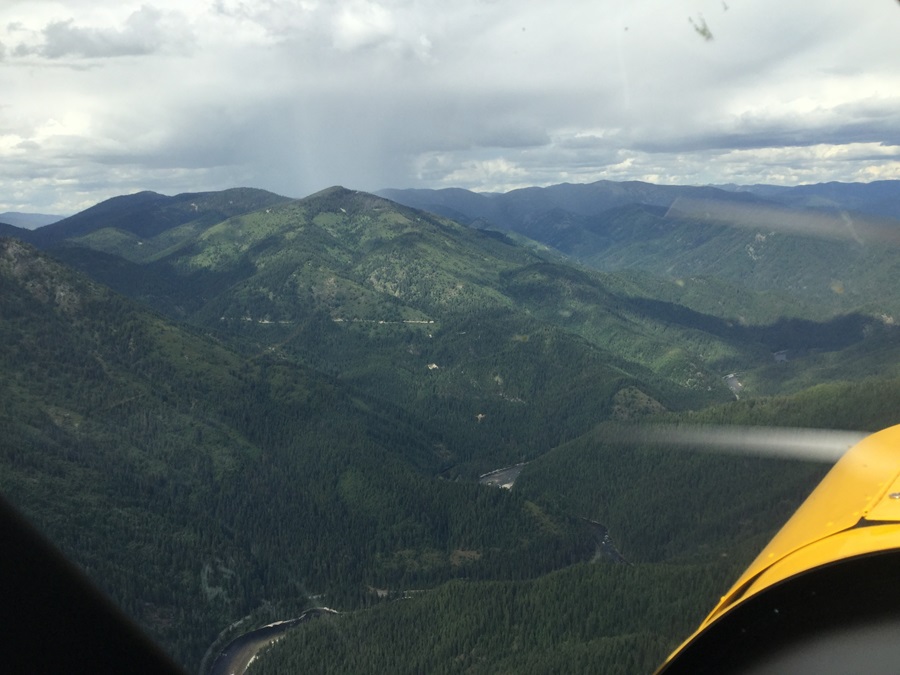Backcountry experience of a lifetime
Right next to 4.5 million acres of the Frank Church-River of No Return Wilderness, the Selway-Bitterroot Wilderness, and Hells Canyon, McCall, Idaho, is the perfect getaway for backcountry and mountain flying, fishing, and exploring nature.
MacNichol has been flying in Idaho since the 1980s and has more than 12,500 hours of flight time (about 80 percent of that in the backcountry). McCall Mountain Canyon Flying Seminars is celebrating its twenty-first year in operation and is recognized by four countries as a school accredited to provide a mountain flying endorsement. MacNichol owns a Super Cub and has several Cessna 182s on leaseback for customers to rent, but she also encourages participants to bring their own airplane.
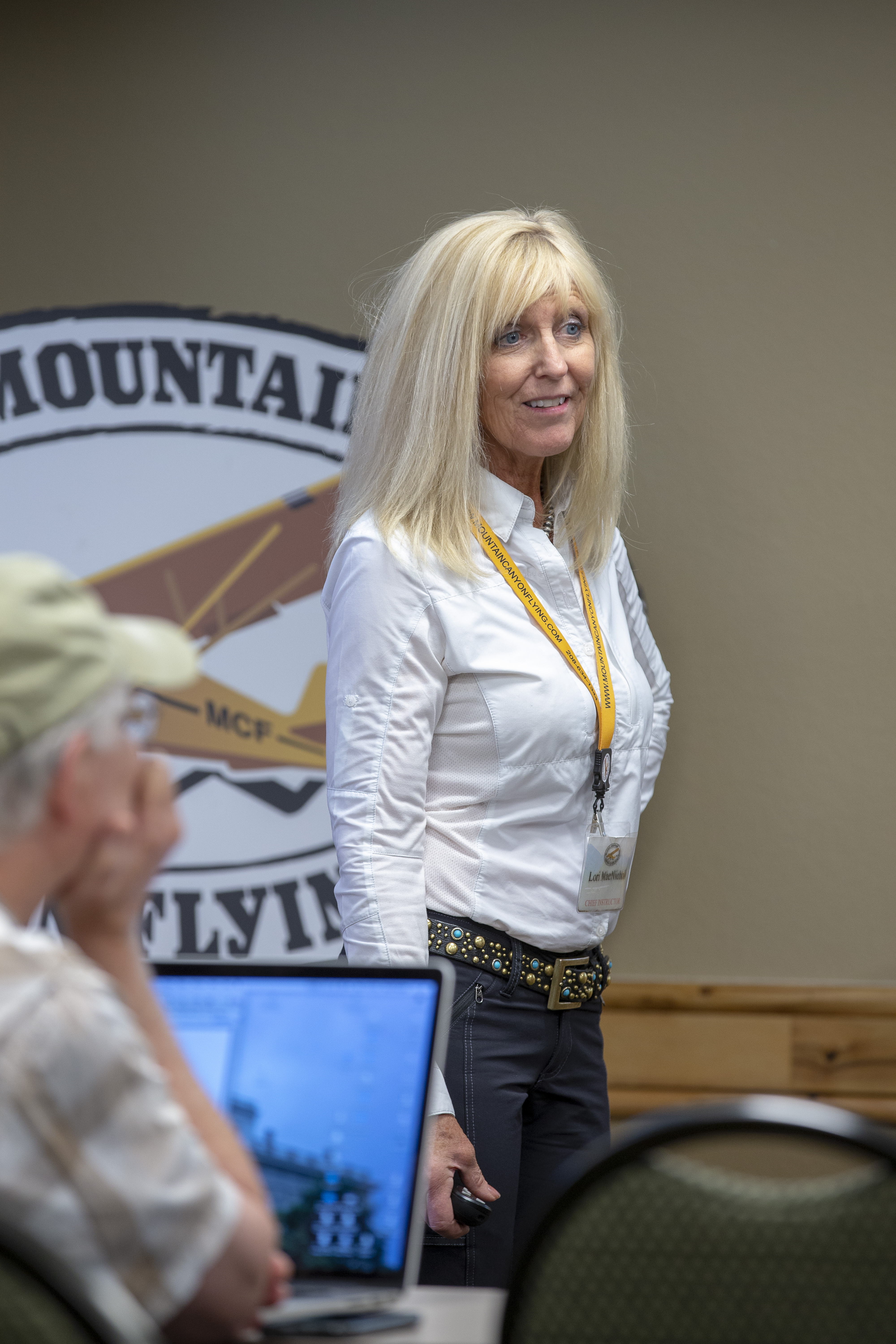
With an interactive presentation, animated graphics, and videos of mountain flying, MacNichol keeps her ground school class on the edge of our seats as we learn how we’ll maneuver our airplanes to get their exact performance figures, fly a steep stabilized approach to a backcountry strip, and perform canyon turns in confined areas. The course also covers the important aspects of density altitude and the effect it has on aircraft performance—particularly on hot days at many of the high-altitude strips in Idaho—as well as aim point and airspeed on those steep stabilized approaches.
The forecast for my training day was beautiful—light winds and a few clouds at about 12,000 feet. That would be perfect for me to fly from Missoula, Montana, to McCall, Idaho, for the training. However, as the instructors at McCall Mountain Canyon Flying Seminars are fond of saying, the mountains make their own weather. One of their instructors, Gary Glodowski, and I are stuck in Missoula until late morning when fog lifts enough for us to get out and flying over the ridgetops under another cloud layer a thousand or so feet above the peaks. McCall would be IFR for much of the day, so we alter our lesson plan to complete the training on the way to a grass strip at Slate Creek, Idaho, in the bottom of a valley bowl.
Glodowski and I find a valley to explore the Super Cub’s slow flight and stall handling characteristics in all configurations, from no flaps to full flaps, straight ahead and in turns. McCall Mountain Canyon Flying Seminars instructors do this with every student, whether in their own aircraft or in one of MacNichol’s. Walls of evergreen-covered mountains flank our left and right as we maneuver in the valley. In one sense, I feel like a test pilot discovering the Super Cub’s envelope. Starting with no flaps, I maintain altitude while slowing the airplane until it eventually stalls. I tell Glodowski the indicated airspeed and rpm setting at which it stalled, and he notes it on a speed card that we are filling out to determine what is called our canyon speed or canyon configuration. We continue this process, adding one notch of flaps at a time. With full flaps, the Super Cub stalls at an impressively low 26 miles per hour that day at 2,000 rpm at 5,700 feet and about 1,800 pounds. After that, we set up a descent at 500 fpm and note airspeeds and power settings that maintain the descent rate as we add flaps, coming up with 52 to 55 miles per hour with full flaps and 1,500 rpm.
Using the first or second notch of flaps, we set our power to 2,100 rpm to get a comfortable airspeed of 65 to 58 mph, respectively, for maneuvering in canyons. This is called canyon configuration and allows the airplane to fly slowly in canyons at a safe but low airspeed so that we are in position to be able to turn around quickly if we accidentally turn up a box canyon, can’t outclimb a ridge, or just want to turn around. It’s also the same speed that we’ll use to fly overhead and observe the landing area at backcountry strips.
Glodowski has me fly close to a mountainside up a canyon with the Super Cub’s flaps retracted at cruise power (2,400 rpm) and initiate a steep 45- to 60-degree bank to turn 180 degrees and note the turn radius. It’s actually impressive, as we don’t even cross the midpoint of the canyon in the turn. Then, we do the same thing a little slower, with one notch of flaps and note an even smaller turn radius. Finally, we approach at canyon configuration, begin the turn, add power, pull full flaps, and turn—careful not to load the wing and accepting a little loss of altitude. The Super Cub turns on a dime! The maneuver, with full flaps, is called the emergency canyon turn. With that down pat, we begin ridge-crossing practice, which is a necessity because of low clouds as we fly toward Slate Creek.
Now, the steep pine-covered mountains and snow-covered crags that looked like giants just waiting to swat down the Super Cub become a beautiful landscape to explore up close from the cocoon of the yellow-and-black ragwing. Flying up a valley at ridgetop level, we hug a ridge while approaching the area where we want to cross at a 45-degree angle so that we can see how the terrain is on the other side and get a sense of what the wind/air is doing (updrafts or downdrafts) while still having an out by being able to turn back down the valley if we decide to abort the crossing.
After one hour with Glodowski, my fears of flying over the remote mountainous terrain fade as I apply the knowledge from ground school the day before with the real-world skills he has armed me with. I analyze canyons, fly around snow-covered peaks, descend down valleys, and rise like a bird on the lift generated by the sun-warmed side of a mountain.
After navigating the ridgetops, spotting fire stations, watching rapids, and viewing mountainsides with new pine growth after fires had wiped them clear, we reach our backcountry practice strip to practice steep stabilized approaches. Slate Creek in Idaho is a beautiful 2,600-foot runway at the base of a valley. A small shelter with a picnic table is all that welcomes visitors. The runway is marked by rocks on each end and at each third of the runway. The goal is to land in the first third. This valley bottom, almost a bowl, is wide enough that pilots can fly a left or right pattern and approach from either direction and still have outs on either side of the valley if a go-around is needed.
We survey the strip, and Glodowski points out the crown in the middle of the runway. I set up for the approach at 55 mph, a speed we determined early in the day with the speed card exercise, and land in the first third. The tall grass—hay, basically—quickly slows the airplane. The tall grass is great for slowing after landing but makes it difficult to get airborne quickly for takeoff. The three-inch extended landing gear from CubCrafters combined with Burl’s Aircraft Alpha-Omega Suspension System and Alaskan Bushwheel’s 26-inch tundra tires, the Super Cub’s touchdowns on the grass are as soft as landing on a bed of pillows. After several passes and letting the Super Cub romp on the grass, we finish the lesson with some more fun playing along the ridgetops.
I put the skills to the test right after the lesson as I head from Idaho back to Missoula, Montana, solo. Clouds have built over the ridges, and rain clouds have formed. With a knot in my stomach, I take off from nearby Idaho County Airport in Grangeville after getting fuel and head across the peaks, navigating between showers. My fear is replaced with a sense of determination and accomplishment—bring on the mountains and bring on the fun!
